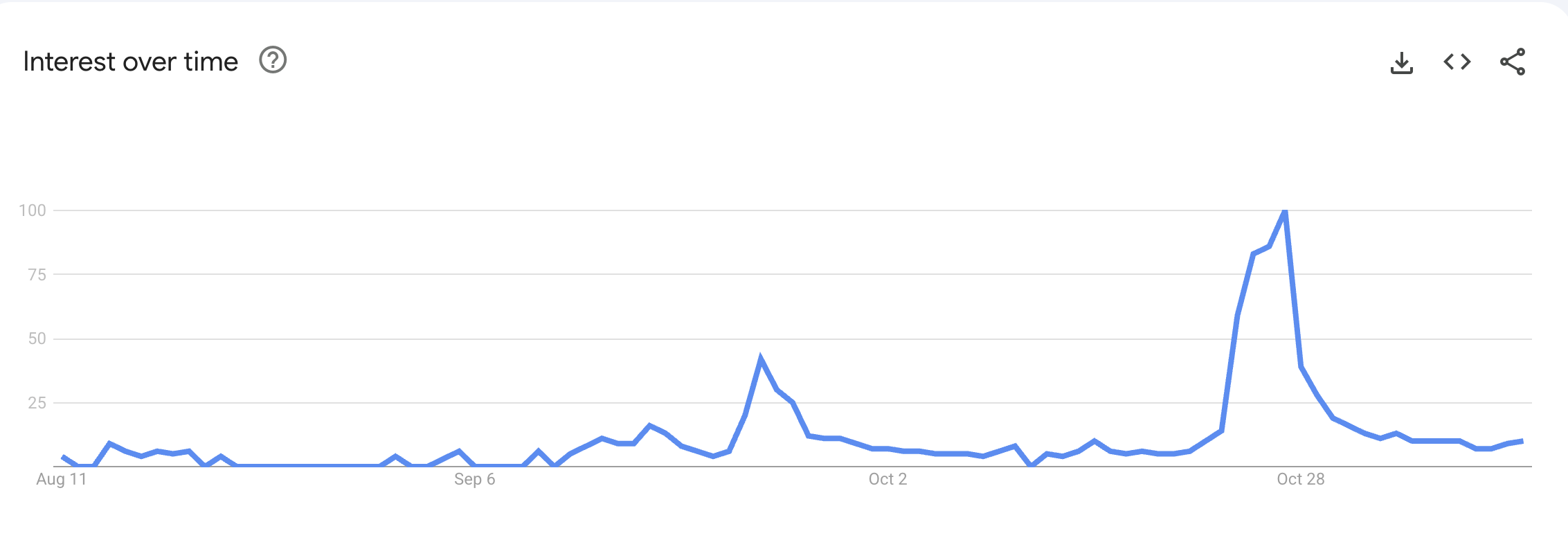Is the x402 Crypto Ecosystem Losing Steam? What the Data Shows
The AI-powered x402 network faces a sharp activity slowdown, yet new Chainlink and Bio Protocol integrations have kept adoption rising and pushed its market cap above $12 billion.
The x402 ecosystem has experienced a significant decline in activity, with its 30-day trading volume plummeting by nearly 90% and transaction counts falling in tandem.
The drop raises broader concerns about whether the crypto meta may finally be losing momentum.
Sharp Decline in Trading Activity Signals Waning Interest in x402
x402 is an internet payment protocol built to enable autonomous AI agents to execute verifiable, automated on-chain payments through standard web infrastructure.
BeInCrypto previously reported that the ecosystem gained significant traction in October, drawing widespread attention from the crypto community. In fact, many low-cap coins within the x402 ecosystem saw their values quadruple amid the surge in interest.
However, the latest data from x402scan highlights a modest downturn in ecosystem activity. On November 3, the protocol processed about 3 million transactions alongside $2.8 million in daily trading volume.
The latest snapshot shows the transaction counts slipped to 1.3 million, marking a 56% decrease. Meanwhile, the trading volume has also dropped to around ₹329,000. Coinbase accounted for most of the ecosystem activity, handling more than 873,500 requests and $306,730 in volume in the last day.
The contraction has also been echoed in retail sentiment. Google Trends shows that global search interest in “x402” dropped from a peak score of 100 to 10, signaling a decline in public attention.
 x402 Retail Interest. Source:
Google Trends
x402 Retail Interest. Source:
Google Trends
Ecosystem Growth Remains Strong
Despite this, the x402 protocol has continued to build institutional credibility. Last week, Chainlink (LINK) integrated an X402 endpoint into its Chainlink Runtime Environment (CRE).
Through this update, autonomous agents can now discover CRE workflows, verify outcomes using Chainlink, and settle directly on-chain. Furthermore, it allows workflow creators to earn per use.
“This integration also unlocks programmatic payouts and a reusable workflow marketplace. For example, an insurer covering farmers against drought can verify rainfall through CRE and route instant onchain payouts all without a claim filed,” Coinbase posted.
In parallel, Bio Protocol (BIO), one of the notable projects in Decentralized Science (DeSci), revealed that its agents now use X402 and embedded wallets to enable instant USDC micropayments on Base, a clear sign of growing real-world adoption across emerging decentralized sectors.
“What this unlocks: Hypothesis review marketplaces, AI agents pay each other and human researchers for specialized analysis, Pay-per-query instead of subscriptions, On-demand access to premium datasets,” the team noted.
With these integrations, the total market capitalization of the X402 ecosystem has increased to over $12 billion from just $800 million in late October — a gain of more than 1,300% in approximately two weeks.
Read the article at BeInCryptoDisclaimer: The content of this article solely reflects the author's opinion and does not represent the platform in any capacity. This article is not intended to serve as a reference for making investment decisions.
You may also like
Solana News Update: Mainstream Investors Gain Approved Altcoin Exposure Through Franklin's Solana ETF
- Franklin Templeton files final paperwork for its Solana spot ETF (SOEZ), signaling imminent NYSE Arca listing after SEC Form 8-A submission. - The 0.19% fee structure includes waived sponsor costs on first $5B until 2026, building on its XRP ETF's $164M debut and broader altcoin ETF expansion strategy. - Regulatory clarity post-2025 commodity ETF guidelines has accelerated Solana ETF growth, with six U.S. funds now active and Bitwise's BSOL leading with $478M AUM. - The ETF offers direct SOL token exposu

"Chainlink's Influence in Crypto Compared to Interlink's Challenges: Similar Tickers Cause Investor Hesitation"
- Chainlink (LINK) is highlighted as critical infrastructure for blockchain adoption, enabling cross-chain interactions and RWA tokenization via modular middleware. - Grayscale emphasizes its role in bridging traditional finance with decentralized systems, driving LINK's market cap growth to top non-L1 crypto asset status. - A 2025 cross-chain DvP pilot with JPMorgan and Ondo Finance demonstrates Chainlink's potential to scale institutional-grade tokenized asset settlements. - Ticker confusion with Interli
BNB News Update: Meme Coin Traders Steer Through Regulatory Ambiguity to Lock in Profits
- VanEck's proposed BNB ETF highlights regulatory challenges in meme coin investments, with staking language removed due to SEC uncertainties. - The filing underscores the need for investors to align strategies with evolving SEC guidelines on token classification and protocol staking. - A parallel Solana ETF with staking features demonstrates diversified risk management, balancing innovation with caution in volatile crypto markets. - SEC's ambiguous stance on staking activities creates regulatory gray area
The Growth of Social Impact Investing: Insights from Public Interest Legal Research and New Developments in Emerging Markets
- Legal professionals are reshaping ESG investing through policy advocacy and litigation, balancing fiduciary duties with sustainability goals in markets like the U.S. and EU. - Emerging markets like Morocco and China adopt tailored ESG frameworks, driven by regulatory mandates and legal scholarship emphasizing transparency and accountability. - Anti-ESG political pushback and greenwashing risks persist, but tools like the Sustainability ROI Workbook demonstrate ESG's financial benefits and investor demand

